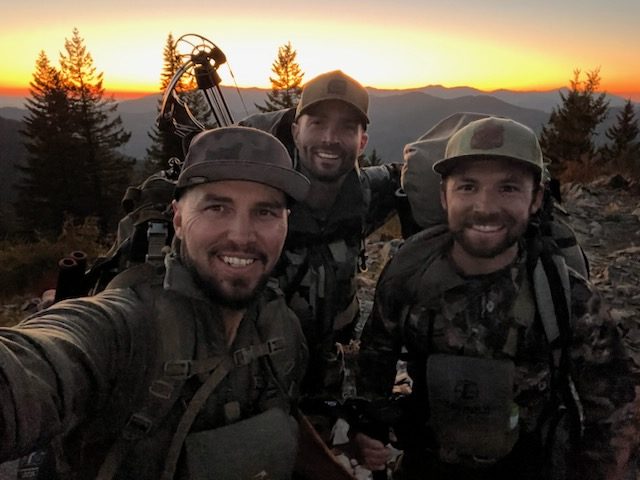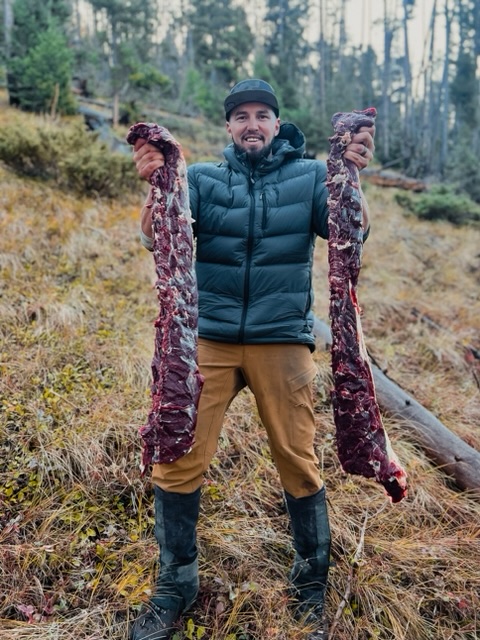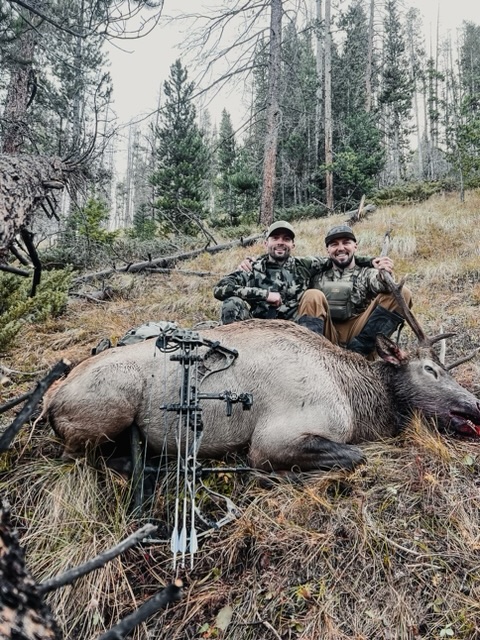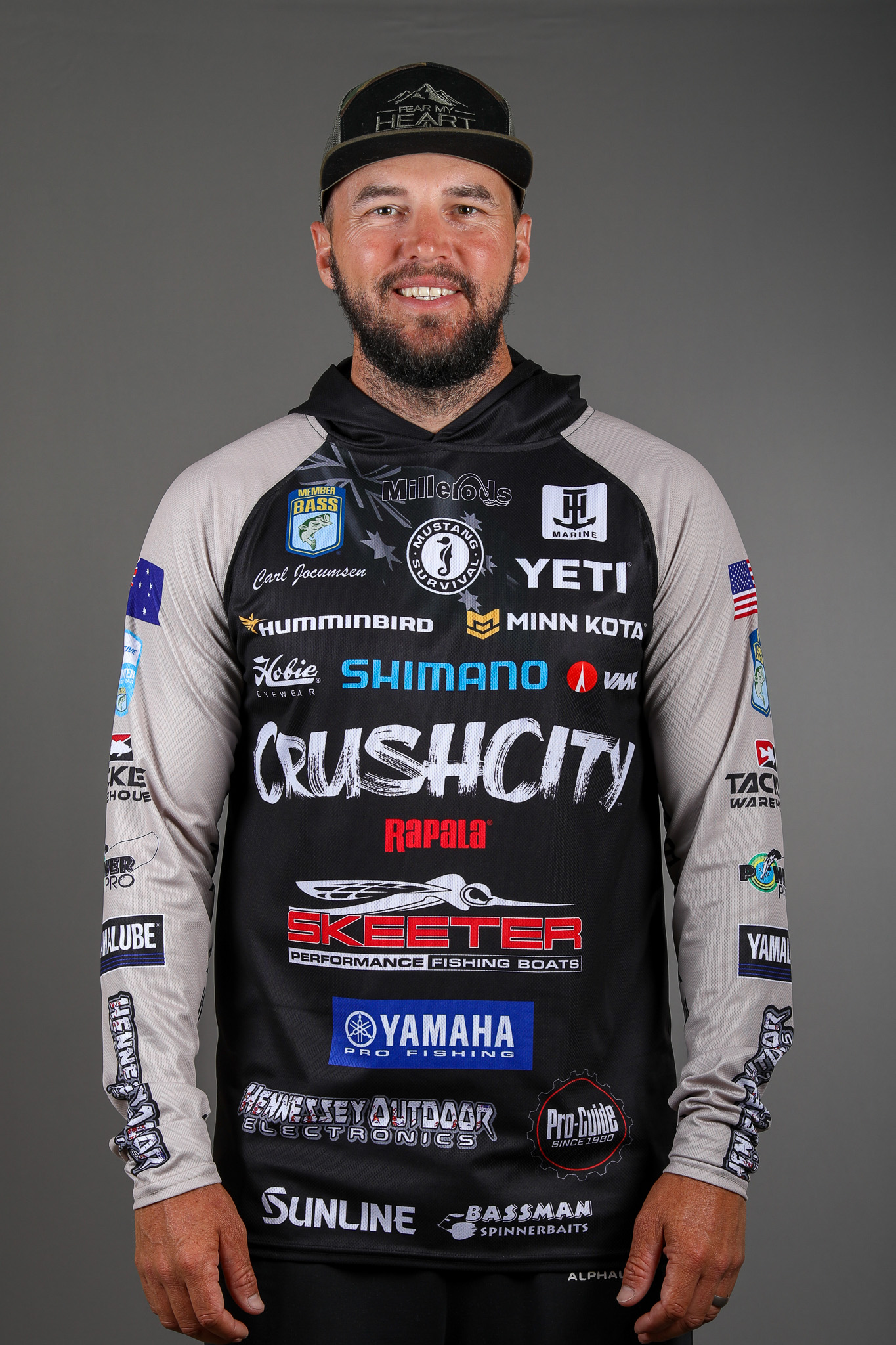
One of the things I relish in life is a challenge, something that takes me out of my comfort zone. A difficult goal hidden down a lesser-known path that tries me mentally, physically and spiritually seems to be my calling card. Over the years, I’ve tested myself with rigorous pursuits like long-distance running, triathlons and intense CrossFit work outs. When I needed a bigger challenge, I moved from my homeland in Australia and chased down the dream of becoming a Bassmaster Elite Series angler in America.
However, the truth is, the most challenging thing I’ve ever done is bow hunt for Elk in the Western U.S., and now it’s become a primal pilgrimage I look forward to every year. Over the last four years, I have dedicated the month of September to descending deep into the steep mountain ranges of Idaho or Montana. The goal is to get down into valleys where elk seek refuge in the lush undergrowth and get as close to them as possible.
I’ve been lucky to have two of the best elk hunters in the region – fellow Elite pro Brandon Palaniuk and good friend Dan Elliot – show me the ropes of elk hunting with a bow. But this year Brandon and Dan got drawn for elk tags in different states, and I got drawn for Idaho. This meant I would be without my best guides for the first time. To add to it I had my best mate from Australia flying in to hunt with me, this is both our dream hunt, and for the first time I would be the one leading the hunt.
During September, we lived at a base camp in the mountains, from there we made daily treks down into the valleys looking for the best places to stalk elk at close range. These daily treks often include 10 miles or more where level ground is a rarity; every step is either up or down. Sometimes we have actually spot camped a couple of nights in small tents down in the valley to keep from having to hike back to base camp. For that reason, we carry heavy packs on our backs with enough food, water and gear to camp a couple nights. The daily trekking is strenuous – I lose an average of 15 pounds during the month, but the pursuit is totally worth it.
While I could go on for hours about the rigors and raptures of elk hunting, this year I outlined a few elemental values I get from this challenging journey and how they relate to bass fishing and to life as a whole.
For starters, just the tranquility of pure nature itself is near and dear to my heart. In Australia, we were always tenting in the outback, no matter if we were hunting or fishing. Nearly all of the great fishing places in Australia are so remote, you have to camp on the ground if you want to stay a few days. We never viewed it as “roughing it,” it was just a normal way of outdoor life.
In fact, one of the hardest things for me to get used to in America was the sheer volume of nice hotels that are right next to the best bass lakes. It was strange to go fishing and then go sleep indoors in a nice comfy bed. To me, fishing meant tenting or sleeping in a swag on the ground, right next to the water to become acclimated to the natural world, both day and night. Sleeping in a tent during elk season is a full immersion back into the natural world.
Another element I enjoy about the hunt is allowing my mind and body to be submerged in the pursuit of wild game for an extended period of time. It’s been said that great hunters are also great anglers, and vice versa. Pursuing both quarries require very similar strategies. Elk, like bass, travel along contours, group up where food is abundant, bed down in safe locations and search out mates in order to reproduce. Much like fishing, stalking an elk in close quarters requires playing factors like weather, wind direction, sun angle and cover density.

Having the mind and body consumed in this pursuit helps bridge the gap between the analytical mind and the intuitive gut. The mind is obsessed with things like gear preparation, planning trekking routes and map study of possible migration paths. But once you’re down in the valley on the elk’s level, then it’s time to trust your gut instincts in terms of reading tracks, rubs and scrapes to set up a hunt. It’s so much like fishing: on the macro-level, the mind predicts where bass should be on mapping, but once you actually get on the water, the choices in lures, specific targets, casting angles and how long to fish a spot are often made by the gut.
Sitting in the woods for hours waiting on elk also teaches patience in letting the situation develop. Perhaps its waiting for the wind to shift or waiting a few seconds longer for a better angle on a shot. Sometimes in fishing it’s easy to force things too much and not take that extra few minutes to let something develop to fully realize the best option. A month of elk hunting hones intuition and patience for sure.
Taking a deep dive into the wilderness also means very limited communication with the outside world. There is usually one spot we can hike to at night to get enough cell signal to communicate with our families and possibly check a weather app. There is no scrolling social media or doomsday news feeds. It’s like living in a digital vacuum for a month. I’m not recommending ditching social media; I’m saying that taking a break can provide a healthy reset to clear the mind. And that was certainly the case this year.

Getting down to the brass tacks of harvesting an elk is when the real soul nourishment begins. Bringing down this remarkable animal, that I have so much respect for, now requires that I honor it by preserving its precious life energy as a food source for my family in short order. This means multiple trips, by foot, to and from the harvest site. The elk is far too large to carry out whole, so it must be quartered and carried, piece by piece, to base camp.
With each return to the harvest site comes the realization that other animals are interested in the fresh meat as well. Encountering wolves, mountain lions and even bears can be an issue. This is when the circle of life becomes a brutal reality. Defending your hard-earned sustenance from other animals that are also trying to provide for their families takes you to another level of primal survival. Now, far from the modern safety of civilization and immediate digital communications, you feel a small part of a much bigger picture. It’s humbling and provides perspective on how precious life is.
When the hunt is over and we return to civilization, I am always overwhelmed with appreciation for the simplest things: a hot shower, dry clothes, a warm meal and the relationships I have with friends and family. Getting together to share the bounty with a meal closes out September and the intensive pursuit that feeds my family with nutrient-rich wild game…and my soul with rich insights and gratitude.






